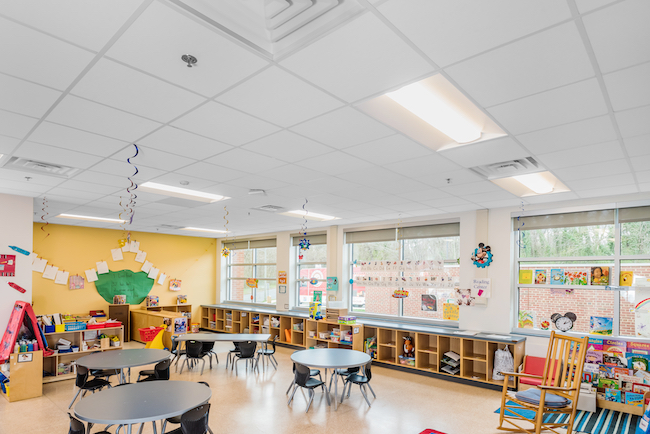Ceiling tiles may seem like a minor detail in school infrastructure, but their impact on the learning environment cannot be understated. From acoustics to aesthetics, ceiling tiles play a crucial role in creating conducive spaces for teaching and learning. In this comprehensive guide, we’ll explore the importance of ceiling tiles in schools, their benefits, considerations, and their overall contribution to enhancing educational settings.

Understanding Ceiling Tiles in Schools
Ceiling tiles, also known as drop or suspended ceilings, are panels that are used to cover the ceiling structure of a room. In schools, ceiling tiles serve multiple purposes beyond simply concealing the overhead infrastructure. They contribute to the overall design and functionality of classrooms, hallways, and other educational spaces.
Importance of Ceiling Tiles in Schools
- Acoustic Control: One of the primary functions of ceiling tiles in schools is to control sound and minimize noise levels. Properly selected and installed ceiling tiles can help absorb sound, reduce reverberation, and create a quieter learning environment conducive to concentration and focus.
- Aesthetic Appeal: Ceiling tiles come in a variety of designs, textures, and colors, allowing schools to customize the look and feel of their interior spaces. By choosing ceiling tiles that complement the overall design aesthetic of the school, administrators can create visually appealing environments that promote a positive atmosphere for students and staff.
- Insulation and Energy Efficiency: Ceiling tiles can help improve insulation and energy efficiency in school buildings by reducing heat loss and minimizing air leakage. This can lead to lower heating and cooling costs, resulting in significant savings for educational institutions over time.
- Light Reflectance: Some ceiling tiles actively reflect light to evenly distribute both natural and artificial light throughout the room. This can enhance visibility and reduce the need for additional lighting fixtures, contributing to energy savings and environmental sustainability.
Read too: How To Extend Kitchen Cabinets To The Ceiling: A Complete Guide for Maximizing Space and Style
Considerations for Choosing Ceiling Tiles in Schools
When choosing ceiling tiles for educational settings, it’s important to actively consider several factors:
- Acoustic Performance: Choose ceiling tiles with appropriate acoustic properties to address the specific needs of classrooms, auditoriums, and other instructional spaces.
- Durability: Opt for durable and easy-to-maintain ceiling tiles that can withstand the wear and tear of daily use in a school environment.
- Fire Resistance: Ensure that the ceiling tiles meet fire safety standards and regulations to protect the safety of students and staff in the event of a fire emergency.
- Environmental Impact: When considering ceiling tile options, look for environmentally friendly choices made from sustainable materials that actively contribute to green building initiatives.
Installation and Maintenance
Proper installation and maintenance of ceiling tiles are essential for maximizing their effectiveness and longevity. Work with experienced contractors to ensure that ceiling tiles are installed correctly and securely. Additionally, establish a regular maintenance schedule to inspect and clean ceiling tiles, addressing any issues such as water damage, mold, or discoloration promptly.
Conclusion
Ceiling tiles play a vital role in creating conducive and functional learning environments in schools. From controlling acoustics to enhancing aesthetics and improving energy efficiency, ceiling tiles contribute to the overall comfort, safety, and productivity of students and educators alike. By understanding the importance of ceiling tiles in schools and making informed decisions when selecting and maintaining them, educational institutions can create optimal environments for teaching and learning.